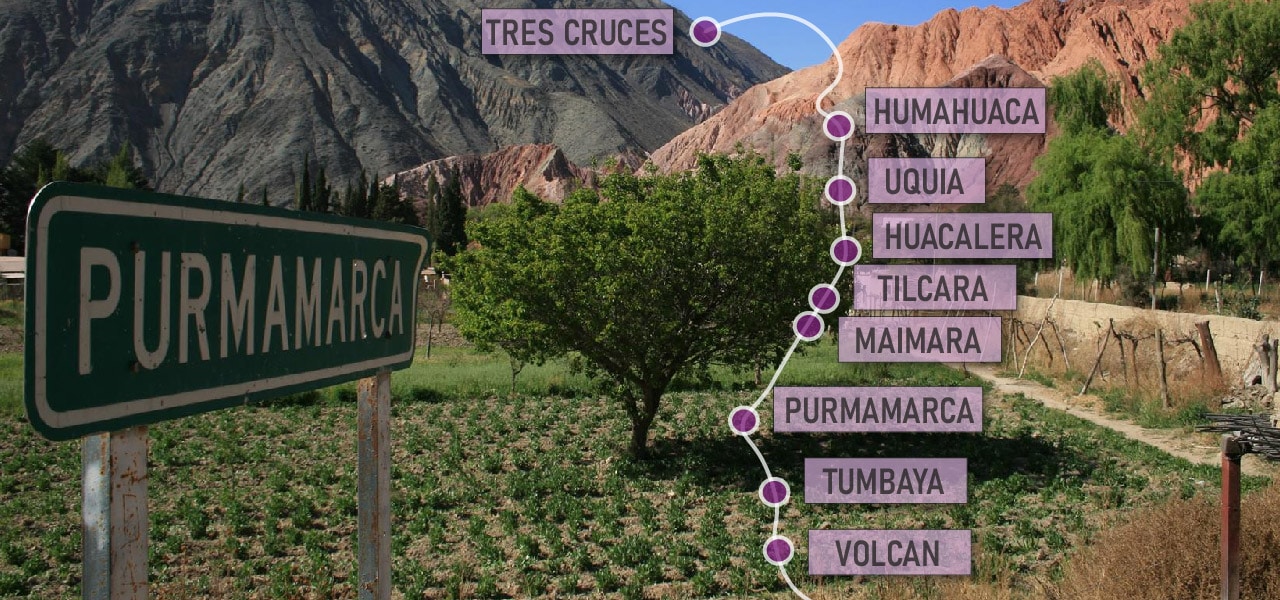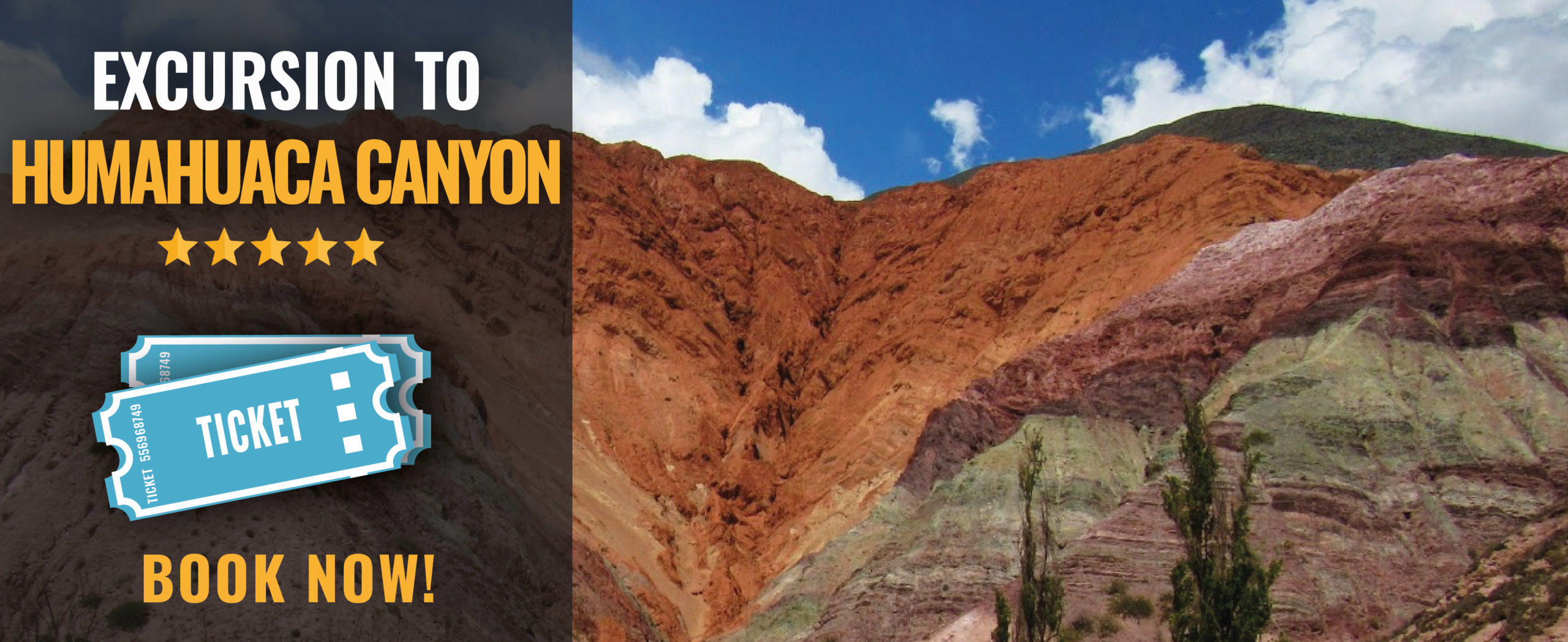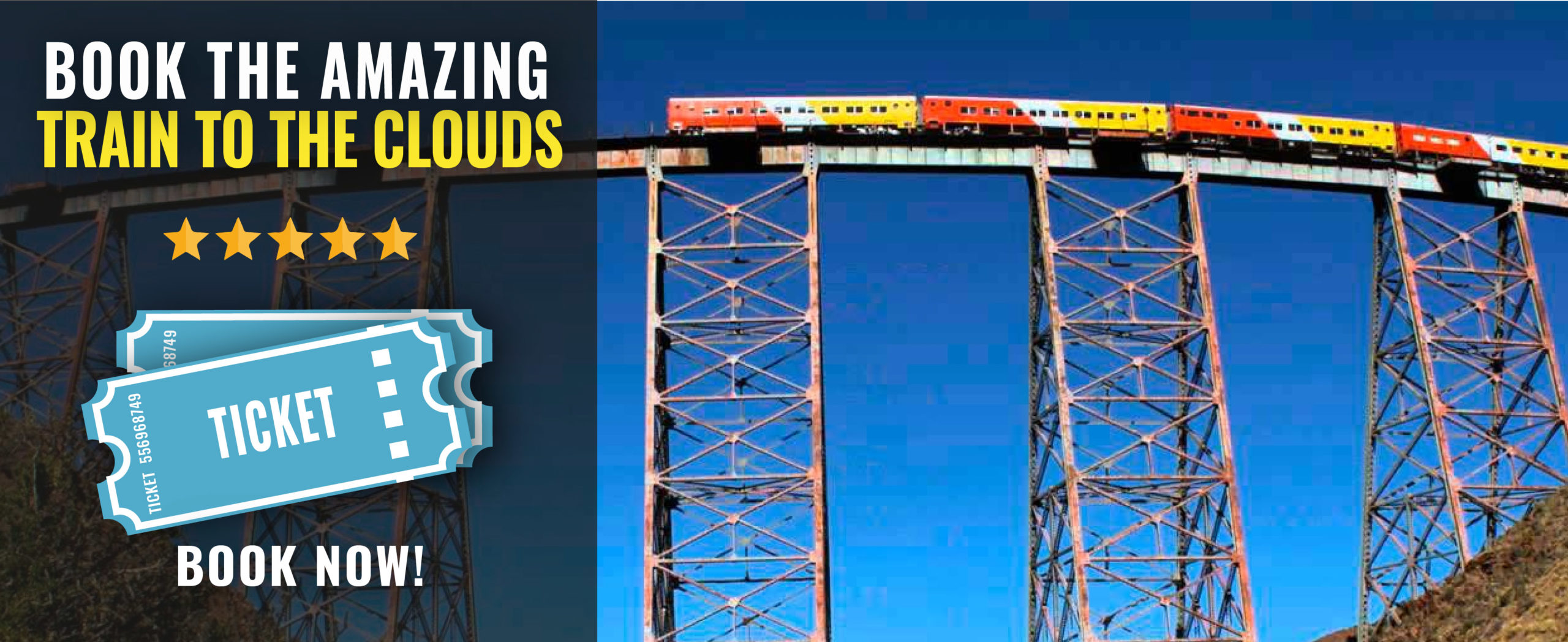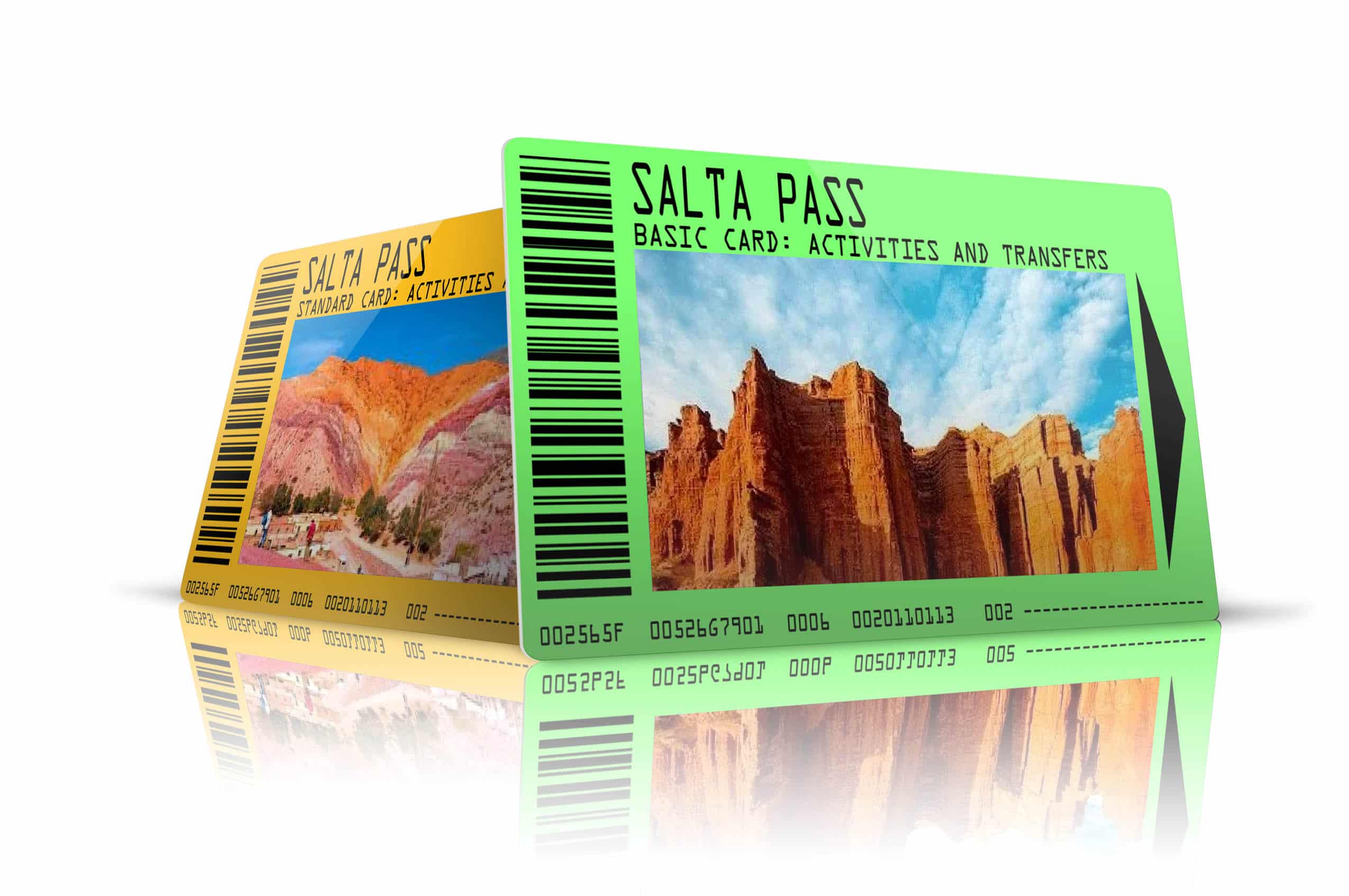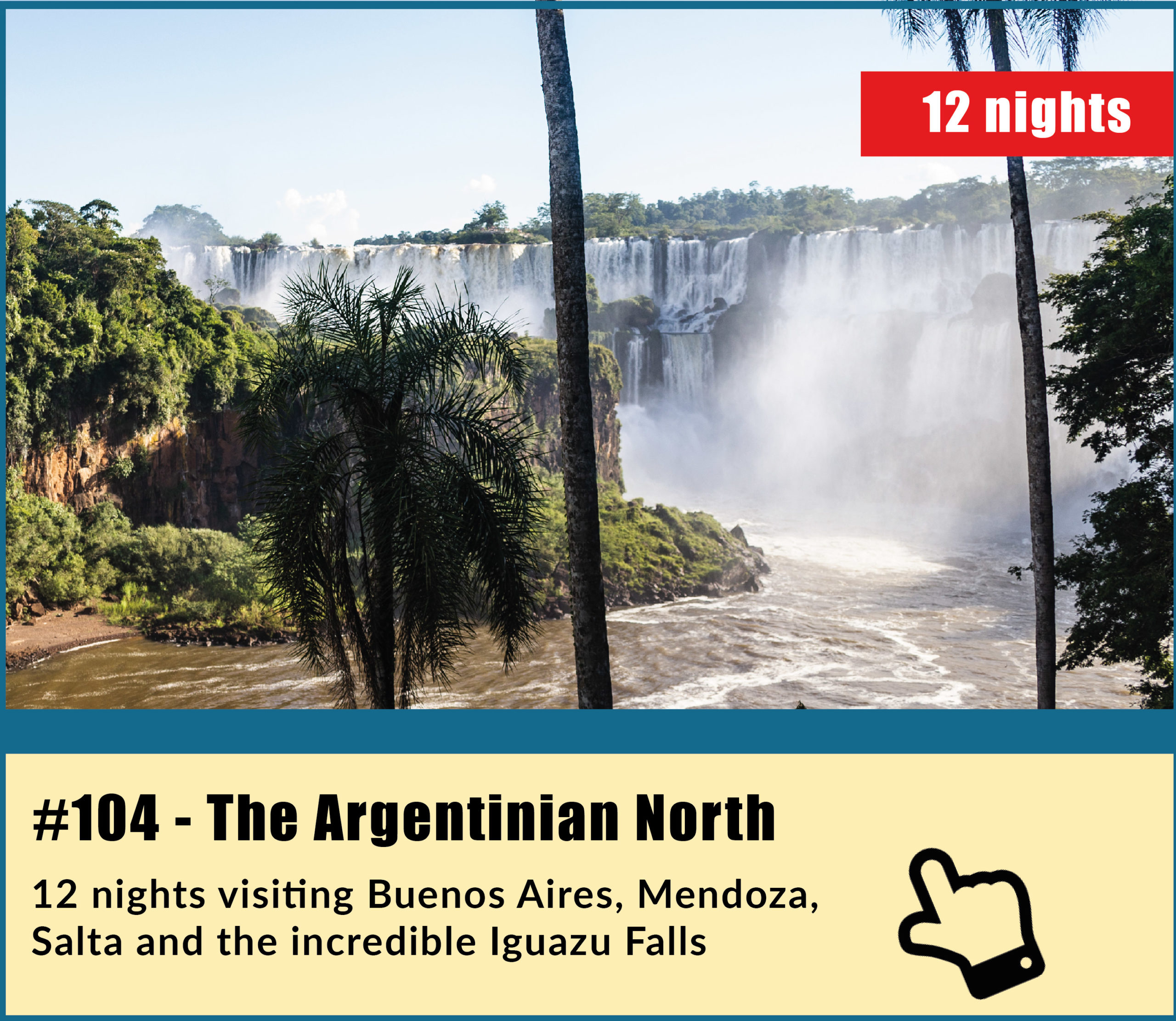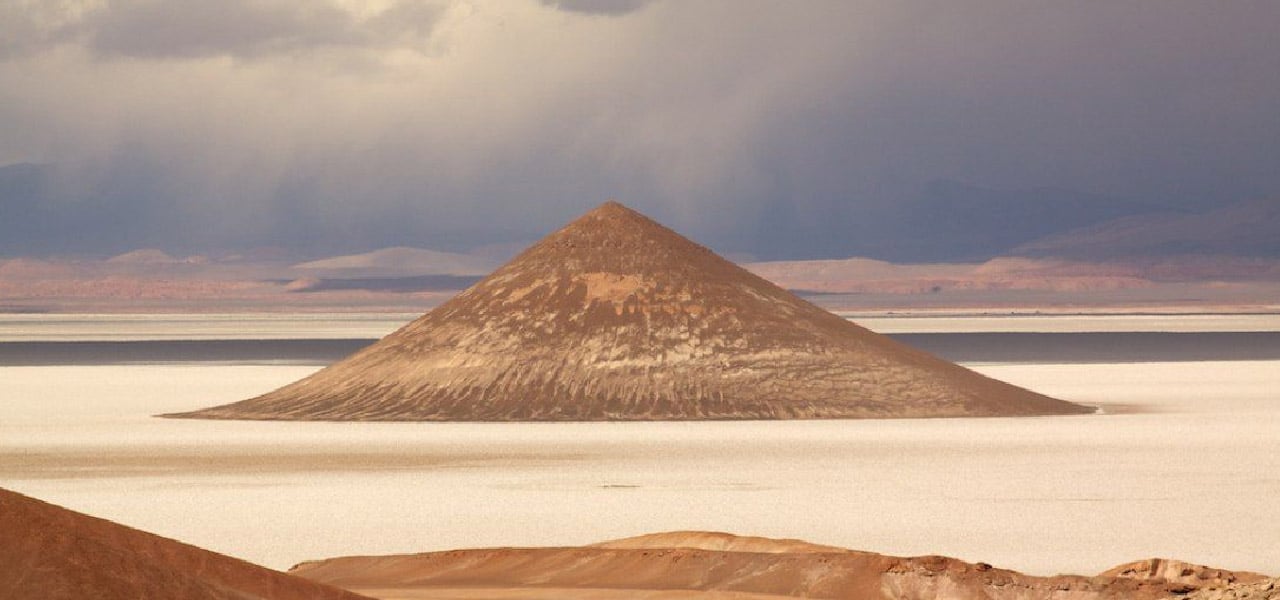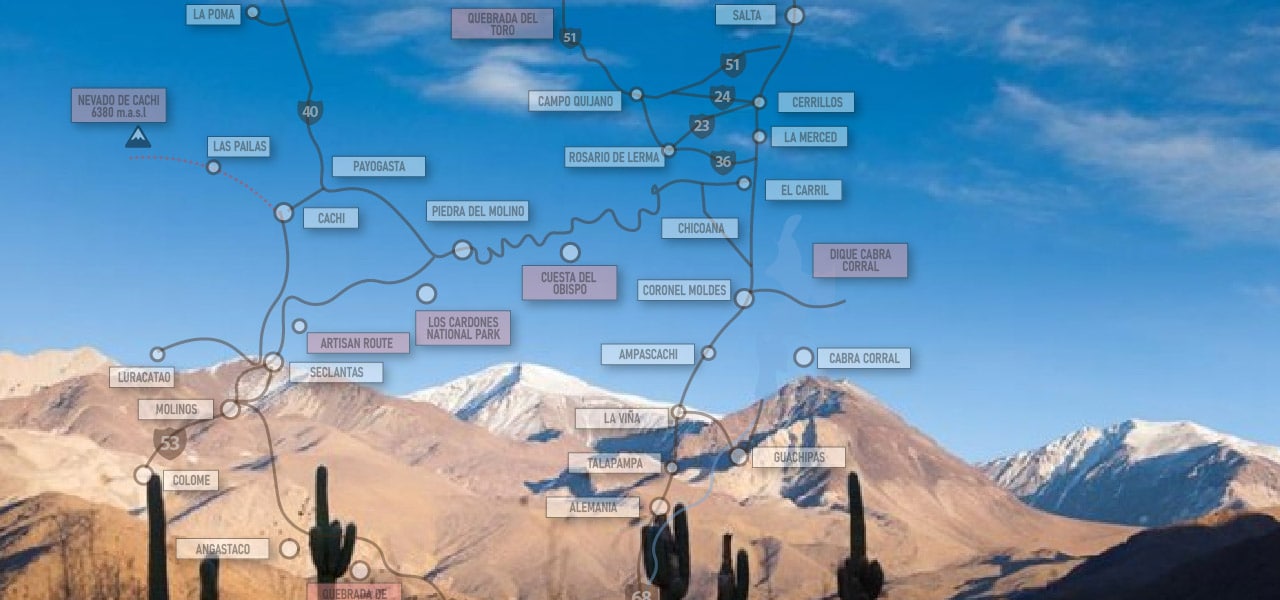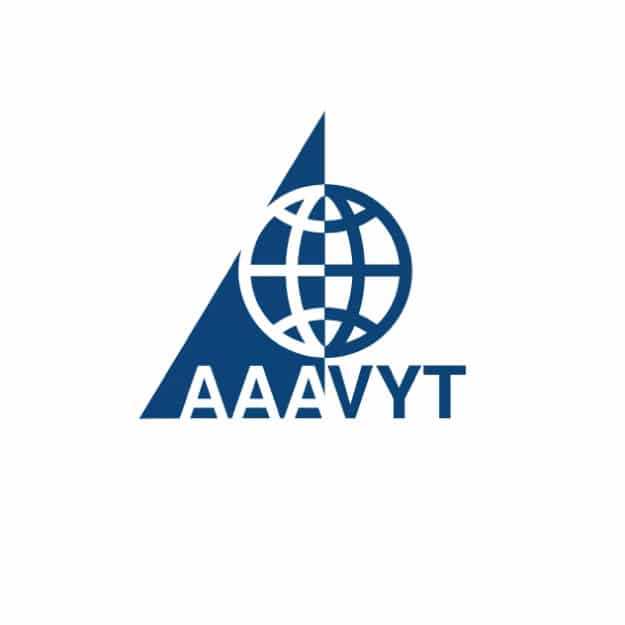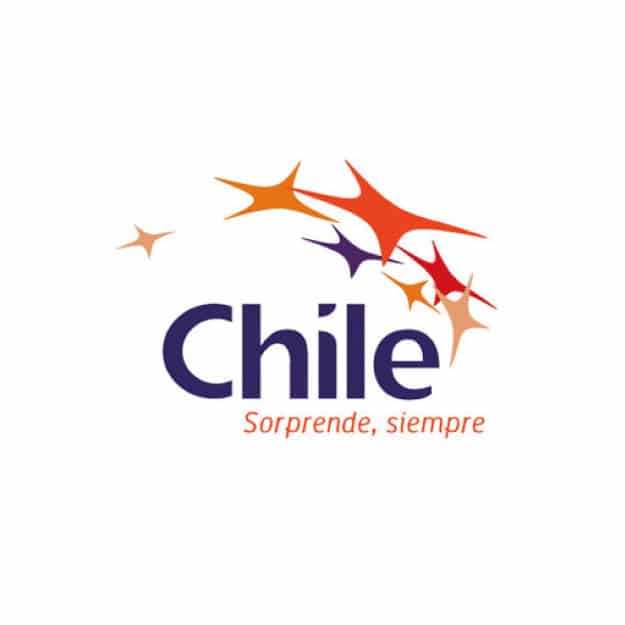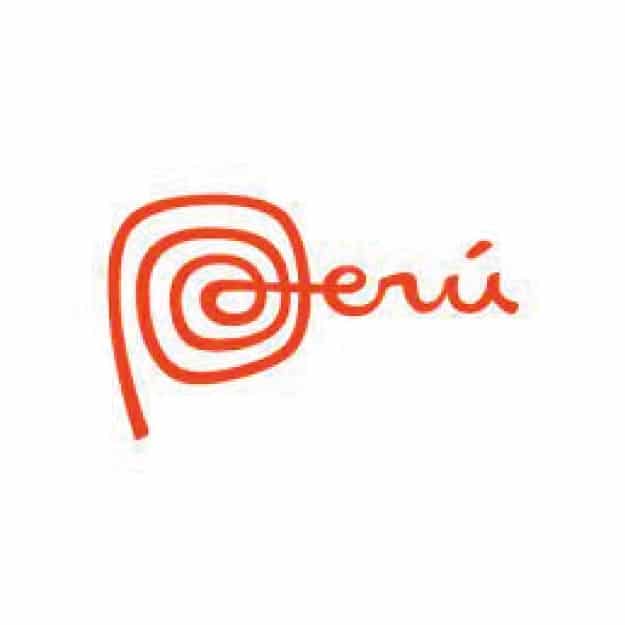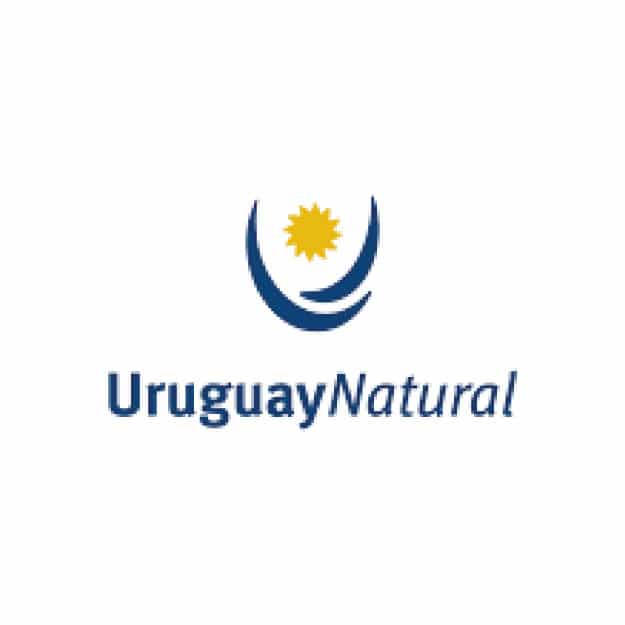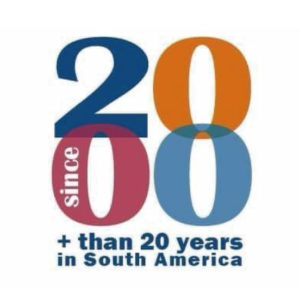The Humahuaca Canyon
The Quebrada de Humahuaca is located in the northwest of Argentina, in the Province of Jujuy, about 1,500 km from Buenos Aires. It is an Andean valley 155 kilometers long, flanked by high mountain ranges and laboriously dug by the Rio Grande, located more than 2,000 meters high.
The small towns link history and traditions of ancestral roots. It is a unique cultural landscape in the world, since the Indian peoples of the area preserve religious beliefs, rites, festivals, art, music and agricultural techniques that are a living heritage, an important reason for it to be declared Cultural Heritage of Humanity by UNESCO in 2003.
The Quebrada de Humahuaca is the perfect combination of spectacular scenery and archaeological wealth. When you arrive, you feel that you have really entered the American continent. Its current inhabitants are mainly of the Coya ethnic group. The ravine was the scene of different ancestral cultures dating back 10,000 years, including the omaguacas, who gave the place its name. Humahuaca is often translated as “Sacred River”, an ancient symbol of what only changes to remain the same.
The Humahuaca Canyon: How to arrive?
It can be reached through RN 9, the Argentine section of the Pan-American highway that connects La Paz with Buenos Aires. It can also be done by domestic flight to Salta or Jujuy and then by land to Humahuaca (176 and 146 km.)
By car you reach Jujuy by the route 9 from Salta, or by the cornice road from El Carmen (Jujuy) to La Caldera (Salta). However there are a couple of rare exotic options. The best is without a doubt to enter from San Antonio de los Cobres in the province of Salta, crossing the Salinas Grandes and arriving at Purmamarca. Once in Purmamarca we are in the Quebrada de Humahuaca with all the attractions, Tilcara, Humahuaca, etc. to the north, without having to go back. This connection has little traffic. Other entrances, to experiment and get off the tourist route, are: from San Antonio de los Cobres to Susques on the route 74, passing through the Sey spot; of San Antonio de los Cobres to Susques by route 40, and route 38 passing through Cobres area; and cross the Salar de Caucharí on the route 27 from Salta reaching El Codo, and eventually Susques. In a trip with usual time limitations, only the traditional route 9 should be tried and even the variant from San Antonio de los Cobres to Purmamarca. In the border area, there are baggage checks, these are frequent for smuggling and drug trafficking.
Those who have already gotten bored with the RN9 can opt for this picturesque cornice path, also paved. This one goes from La Caldera, in Salta, to El Carmen, in Jujuy. Its narrowness makes some people panic and others feel dizzy as if they were 4000 meters away. The landscape from the Dique La Ciénaga to the Abra de Santa Laura is not wasted.
Humahuaca Canyon: Unesco World Heritage
The Quebrada de Humahuaca was declared by UNESCO as a World Heritage Site in 2003. The world body recognized this site that extends along an important cultural itinerary, the Inca Trail, which follows the course of the Rio Grande and its spectacular valley, from its source in the cold desert plateau of the High Andes to its confluence with the Leone River, some 150 kilometers further south. In the valley there are important traces of its use as an important commercial route since 10,000 years ago, as well as the activities of groups of prehistoric hunter-gatherers. There are also vestiges of the Inca empire (15th and 16th centuries) and the Republican fights for the independence of Argentina (19th and 20th centuries).
Aboriginal people of different ethnic groups walked along its trails, and today they still preserve religious beliefs, rites, festivals, art, music and agricultural techniques that are a living heritage. With this declaration, UNESCO is committed to supporting the educational and sustainable development of the area, and the preservation of the culture of native peoples.
It was included in the category of Cultural Landscape. This is a new category, in which heritage assets represent a synthesis between natural landscapes and a cultural journey, since the Humahuaca area was the unavoidable means of communication between Upper Peru and the Viceroyalty of the Río de la Plata. The Quebrada de Humahuaca combines a series of natural, cultural and historical attractions. They are inserted in the Inca Trail, which was born in Ecuador and extended to the south of the province of Mendoza, in Argentina.
This tour is another of the sites that UNESCO included in the precious list. La Quebrada is a section of that great route used by the Incas. The declaration by UNESCO as a World Heritage Site put this region (as is what is happening more slowly in the neighboring Yungas Biosphere Reserve) in the international showcase, a situation that requires commitments and continuous improvement processes to maintain over time this status acquired, which is the foundation of the new possibilities of productive development in the region
The declaration. In the middle of the following year, on July 2, 2003, at the XXVII General Assembly of the World Heritage Center, with the concurrence of all the member countries, the Quebrada de Humahuaca was unanimously declared as World Heritage, in the Landscape category. Evolutionary Cultural, recognizing it as unique.

The Humanuaca Canyon: a bit of history
The local people link history and traditions of ancestral roots. It is a unique cultural landscape in the world, since the Indian peoples of the area preserve religious beliefs, rites, festivals, art, music and agricultural techniques that are a living heritage, an important reason for it to be declared Cultural Heritage of Humanity by UNESCO in 2003.2 Its current inhabitants are mainly of the Coya ethnic group. The ravine was the scene of different 10,000-year-old ancestral cultures, among them the “omaguacas”, who gave the place its name. “Humahuaca” is usually translated as “Sacred River”, an ancient symbol of what only changes to remain the same. There are also sites such as the place of «Inca Cueva» (relatively modern name) where signs were found (petroglyphs, carved stones, etc.) whose age is estimated at 10 millennia.
In the Quebrada de Humahuaca, there are still the Quechua descendants of the ancient settlers, self-styled original peoples, and they live coexisting with nature, the Pachamama (Mother Earth), the sun god, the god of thunder, lightning and all living beings. whom they respect.
Among its attractions is the monolith that indicates the crossing of the Tropic of Capricorn and the Pucará de Tilcara, a fortification built by the primitive settlers erected on top of the mountains.
The Humahuaca ravine served as a route to the Incas, it was an obligatory passage for expeditionaries and colonizers and an important commercial route in the viceregal stage. The settlements of the colonial era acquired great importance since they developed together with the ancestral settlements of the place, in addition to a cultural exchange with neighboring territories in South America, an interaction that began 10,000 years ago and persists today. Its real importance lies in the fact that the stream has functioned as a permanent means of interaction, linking distant and different territories and cultures, from the Atlantic to the Pacific and from the Andes to the southern plains. It was also the scene of many combats fought during the War of Independence and during the war before the invasion of the Peruvian-Bolivian confederation.
Currently many of these aspects go unnoticed, the aforementioned original peoples are in continuous conflict4 with the provincial government claiming the land that once belonged to their ancestors. Two towns in the Quebrada de Humahuaca, Purmamarca and San Francisco de Alfarcito, were integrated into the Authentic Towns Program, carried out by the National Ministries of Culture and Tourism. with the aim of valuing the identity of peoples with unique characteristics throughout the country, promoting the appropriation of the local community and the revaluation of the natural and cultural heritage.
Authentic Peoples are defined as populations that are characterized by preserving their identity and idiosyncrasy, reflected in different aspects related to their natural and / or cultural heritage, their architecture, traditions, gastronomy, landscape, history, religion, crafts, and the origin of its settlers.
What does Humahuaca means?
Omaguaca in Aymara, means sacred water. Umaguaca in Quechua means uma = head and guaca = sacred place
Weather in the Humahuaca Canyon
The height of the valley varies between 1,600 to 4,500 meters above sea level. The climate is dry, windy, it rains more in the summer afternoons (barely 300 mm. Per year), and has a very marked thermal amplitude with night frosts and days with a scorching sun and temperatures that can exceed 30º C. Do not forget to bring a hat, long sleeves, long pants, sunscreen.
What is best season to visit the Humahuaca Canyon?
Although you can visit the Quebrada de Humahuaca all year round, but it is better to avoid the summer since it is the rainy season (November to March). The rains cause mudslides like the one in Volcán in January 2017. In winter it is very cold, but it is sunny. Autumn and Spring are ideal: sunny, dry and not as hot as summer.

Where is the Humahuaca Canyon located?
The Humahuaca Canyon is located in the central part of the province of Jujuy, and it is crossed by the National Route N ° 9, also called Route Panamericana. It extends between the towns of Tres Cruces in the north and Volcán in the South.
The route of the Humahuaca Canyon
We start visiting the Humahuaca Canyon from south to north. First point is Volcan and final point is Tres Cruces

The Humahuaca Canyon: Volcan
Volcan is the first town in the Humahuaca Canyon. Located 2,000 mts above sea level, Volcan is located in front of Cerro El Manzano (3,359 m); On the left bank of the Rio Grande the streams of the Quebrada del Volcán and El Cardenal flow down from the Abra del Volcán. It receives its name from the torrent of mud or “Volcano” that comes down from the hills like a flood of rocks and mud in the rainy season (summer). The small town was found in 1905 as a railway station and workshop.
Located 1 km north of the town, the Pucará of Volcan, was occupied from the 6th century. It was depopulated with the forced transfer of its inhabitants, the Tilian to Salta at the end of the 16th century. It includes 600 enclosures with double stone walls and covers 7 hectares.
The Humahuaca Canyon: Tumbaya
Tumbaya is the second town of the Quebrada, located 2100 mts above sea level. The small town of Tumbaya; is the head of the department of the same name. He was born from a pre-Hispanic town. Its name is a corruption of “Tunpaya”, which derives from Tunpay = slander, blame.
It was named head of the Humahuaca parish in 1773. Once there, you can visit the Andalusian-style Mudejar church. The Historic Chapel is a National Historic Monument. The 17th century chapel collapsed and was rebuilt in 1796. Deteriorated, it was demolished in 1864 and the current chapel was erected in 1873. Facing the square, it is surrounded by a low wall with an entrance arch. It has a single nave and a tower with an octagonal drum under the dome. See his paintings: “Christ of the tremors” and “Jesus in the garden”.
Route 9 runs winding along the Rio Grande Route Nac. 9 and the Rio Grande in Tumbaya. On a whitish rock formation on the eastern bank of the Rio Grande, with rectangular enclosures. It receives its name from the legend that attributes the origin of the slope to San Francisco Solano, during his visit in 1690.
The Humahuaca Canyon: Purmamarca
May be, one of the most famous small townsin the Humahuaca Canyon, due to the amazing 7-color hill. Purmamarca is located 2350 mts above sea level, and the name in Quichua means “People of the Puma”.
The old town is a National Historic Site . The Santa Rosa de Lima church is also National Monument. It is a town of pre-Columbian origin and today maintains the appearance it had in the nineteenth century, with dirt streets and whitewashed adobe houses. Visit her at the Santa Rosa party, during the celebrations.
The Humahuaca Canyon: Maimará and the Painter´s Palette (Paleta del Pintor)
Maimara is located 2390 mts above sea level. It was born with the railroad at the beginning of the last century. Its name, in Aymara language means: “The Other Year” or “the past” but Fidalgo gives it another meaning: “aerolito” “falling star”.
In Maimará, you can visit the old water-driven flour mill. It dates from 1888. It is located in La Banda, to the northwest of the town, on the other side of the Rio Grande. Corn flour was used for the production of chicha (typical alcoholic beverage).
Our Lady of Candelaria Church, is a typical colonial church of La Quebrada. On the west side of Route 9, 3.5 km from the town, you will find the natural bridge, an arch eroded by natural elements.
The Antiguo Iruyto, is located a short distance from the bridge, it is a pre-Columbian site. In the North, the word “antigal” is a deformation of “old”, an ancestral place and is a reference to pre-Columbian sites. Continuing along the route, after 6 km you reach the access to Tilcara on the right hand side.
The Paleta del Pintor (Painter´s Palette)
This amazing show of nature is on the eastern bank of the Rio Grande. From the route there are panoramic views of the eastern coast of the Quebrada de Humahuaca where geological layers of bright colors can be appreciated. These are rocks from the Cretaceous (144 – 65 Ma.) Composed of calcareous rocks, sandstones and eroded clays. They form geoforms such as: “Paleta del Pintor” or “Cerro Rosa”, named for their coloration, see photo below.
The Humahuaca Canyon: Tilcara
The next small town in the Humahuaca Canyon is Tilcara, located 2465 mts above sea level. You can visit the Church of the Virgin of the Rosary and San Francisco de Asís
It is a National Historic Monument built in 1797 to replace the previous temple. In 1860, when Tilcara became the seat of the parish, it was restored and inaugurated in 1865. In 1944 it was again restored. It faces the town square and has a fenced atrium. Its two bell towers are crowned with domes. The altar is masonry.
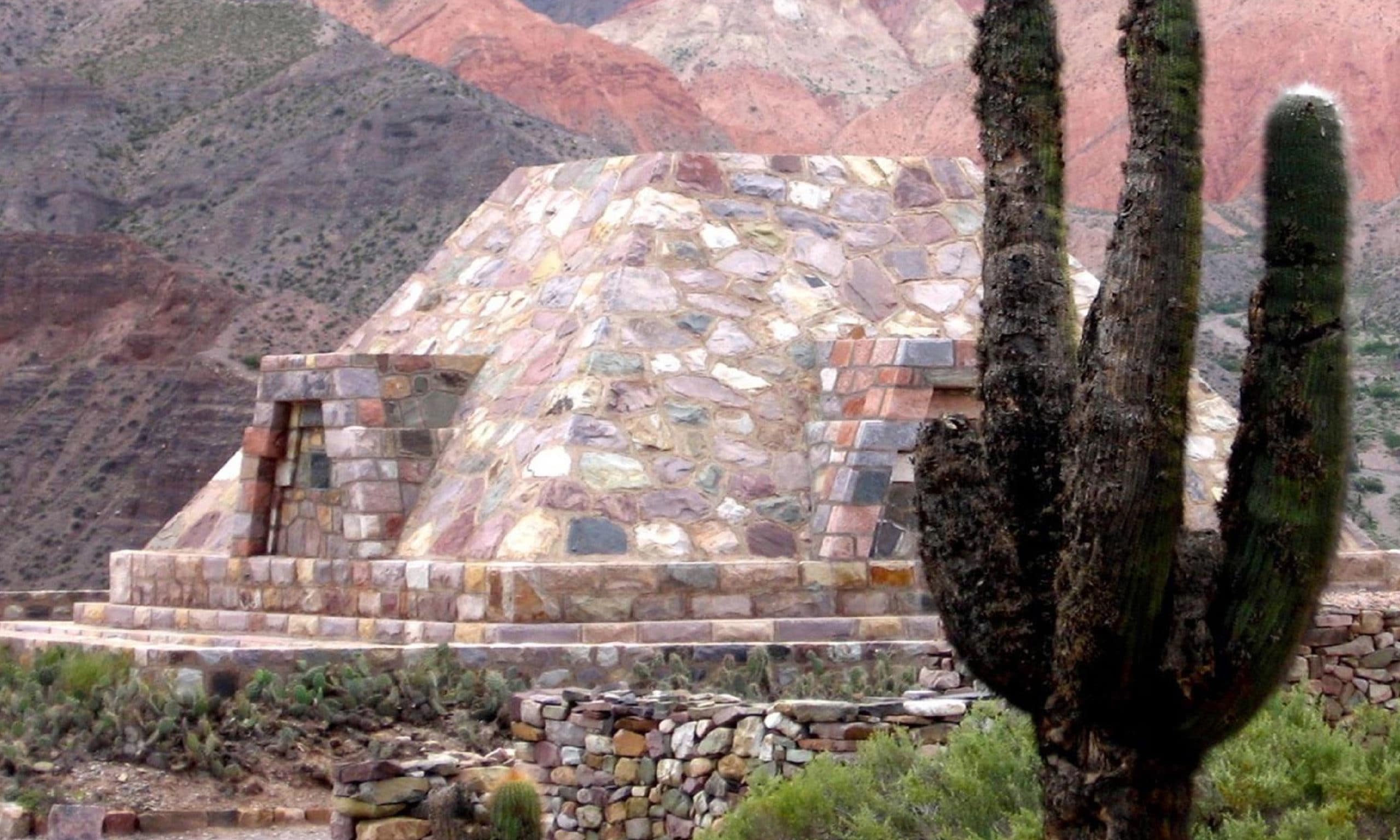
Pucará de Tilcara and the Alfarcito
The Pucará de Tilcara Site is a National Historic Monument. It´s an archaeological site formed by numerous constructions made by the Tilcara indigenous people, a partiality of the omaguacas, at a strategic point on the Quebrada de Humahuaca.
It is located 1 km south of the city of Tilcara, on a hill 80 meters high, next to the confluence of the Río Huasamayo and the Río Grande, 1 which runs there at 2450 meters above sea level. It was an ideal place to defend against attacks, since it dominated the crossroads of the only two roads in the place. On the one hand, it is defended by the cliffs above the Rio Grande and on the other, by the rough slopes. In the more accessible slopes they built high walls. The pucarás were not only defensive but also social and religious. From that height, the surrounding farm fields and peasant dwellings in the lowlands could be controlled.
It is one of the most important and well-known areas of the ancient pre-Hispanic populations of the Humahuaca region. It has an area of 8 to 15 hectares and is approximately 1160 ± 70 years old. In the Pucará several neighborhoods of houses, corrals, a necropolis and a place for sacred ceremonies are identified, among other spaces.
Only a few mentions in texts and footprints on the ground have remained as records of the reconstruction. The method used was based on archaeological methods from the early 20th century and in good sense. At present, the approach to the internal route and the reconstructions of the roofs are considered adequate. On the contrary, the reconstruction of the walls and vehicular access caused notable modifications. In addition, there is a truncated pyramid on the site that is not related to the architectural tradition of the region.
With the current analysis of photographs, plans, sketches, publications and other productions prior to 1910, an attempt is made to identify part of the transformations carried out during the reconstruction. The planimetric survey will allow to control the impact of the tourist route and the weather, among other factors, to develop a better preservation of the place.
The “Dr. Eduardo Casanova” Archaeological Museum currently has 7 traditional exhibition rooms and another 3 temporary ones, so that the visitor can interact with the exhibition and dialogue with the guides and researchers. At present it is an important tourist attraction, even more so since the Quebrada de Humahuaca was declared part of the World Heritage of Humanity.
To the East of Tilcara is Alfarcito, roasting the Devil’s Throat. It covers an area of 1800 ha. in the Huasamayo river basin at the foot of the Alfarcito hill. Cultivation areas are observed in the Linderos and Chilcaguada streams, including platforms and platforms. There is a dam and ditches for irrigation. It has been busy since the beginning of the Christian Era.
Humahuaca Canyon: The Tropic of Capricorn
It is an imaginary that circles the earth at a variable latitude (it moves slowly due to the phenomenon of the “precession of the equinoxes” – a pitch like a top, of the Earth’s axis of rotation), which today It is at 23 ° 26 ’15 “South.
It marks the southernmost point where the Sun can be seen at the zenith (the vertical of the place) during noon. In the Tropic of Capricorn this event takes place on the day of the Summer Solstice, December 21 or 22 (it fluctuates according to the year). Further south of the Tropic (for example in Buenos Aires) the Sun will never be seen in the vertical of the place. Its name is due to the fact that on that date the Sun is in the zodiacal constellation of Capricorn.
The Humahuaca Canyon: Huacalera
Huacalera is the next point in the Humahuaca Canyon, located 2641 mts above sea level. Its name refers to a type of cage, the “huacal”. It would then be the “place of the huacas”. It stretches, narrow, along the route. The cultivated fields are on the other side of the river. It is strategically located at the junction of the Quebrada de Quitara Grande (west), Quebrada de la Huerta (east) and the Rio Grande.
Here patriots and royalists faced each other in the Three Combats of Huacalera, in December 1817 during the Wars of Independence. In Huacalera, you can visit the historic Colonial Church and the pre-Columbian sites of La Huerta and Campo Morado.
The Chapel of Our Lady of Candelaria de Huacalera is a National Historic Monument. It was built in 1655 as a chapel for the “Hacienda de Huacalera”. He witnessed the flesh and burial (partial) of the remains of General Lavalle in 1841 (more details). In 1850, dilapidated, it was repaired, and again in 1944, 1980 and 1998. A street lined with poplars leads to the chapel, which has no atrium or perimeter wall. The roof extends above the portal. It has a unique tower with a dome. It is made of adobe and the roof is made of cardón. It houses native imagery and paintings from the Cuzco school of the 18th century (see the “Marriage of the Virgin”).
La Huerta is a National Historic Monument, an important pre-Hispanic town located upstream, on the right bank of the La Huerta stream, it differs from others because it is not a pucara. It is in a low place with high humidity and abundant vegetation. Inca architecture with “wankas” (large vertical stones) and a “kallanka” is combined with that of the “omaguaca”. It dates from the 11th century and was occupied until the 16th century.
From Huacalera, you can continue the route and visit some interesting places: the Pucará de San José is on top of a terrace to the west of the Rio Grande. Another interesting point is the Pucara de Yacoraite, known by the natives as “Chichiraira”, it is located on a terrace at the northwest angle between the Grande and Chichiraira or Yacoraite rivers.
When the new Route 9 was drawn, the Inca administrative part of the pucará was destroyed. But silos, pens and walls survive. It is from the Late and Inca period.
Los Amarilos isa National Historic Monument that covers 10 hectares and it is the most extensive of the Quebrada de Humahuaca. It is located at the foot of Cerro Pollera del Coya, to the west of the route.
The Humahuaca Canyon: Uquia
Uquia is a small town located 2824 mts above sea level. The name of “Uquia” of Quichua origin would be “Okhuyay” = “to be deep” and also “corner”, “very narrow place”.
Here the Combat of Uquía took place, on December 1, 1817 during the Wars of Independence. An interesting place to visit is the church thatwas declared historical monument. The Church of San Francisco de Paula and Santa Cruz is a National Historic Monument and was erected e in 1753. It is located in front of a simple square and the bell tower is far from the complex. The property is surrounded by a wall. Its ornate interior has a baroque altarpiece and the renowned Cuzco paintings, the “Nine Angels Arquebusiers” (see image).
The Uquia mill is located on the east bank of the river. It is accessed by bridge from the town. It is surrounded by a grove of poplars and fruit trees. The water-powered mill was built by Plácido Cano. Their molars are from the 19th century. It has adobe walls with stone foundations. The Pucara de Chijra, is on the eastern side of the Rio Grande, at the confluence of the Quebrada Grande de Capla, on its southern bank. It is covered by a dense tapestry of cardones.
The Humahuaca Canyon: Humahauca Town
Humahuaca is located 2942 mts above sea level and was declared a National Historic Site in 1975. The town collects the name of its original inhabitants, the “Omaguacas” tribe, but the origin of the name would be Aymara: “Umawak’a”, meaning “sacred water”. It is an ancient town, founded as a town of Indians in 1591 by the conqueror Juan Ochoa de Zárate. In 1592 two chapels were erected: that of Santa Bárbara, whose bell tower still survives, and that of San Antonio. It was the religious head of the Quebrada during the Colonial period. The colonial checkerboard spread from the churches but the town took its current form in the second half of the 19th century.
In addition to the historic town and the nearby pucará, there are options to visit the incredible Serranía de Hornocal
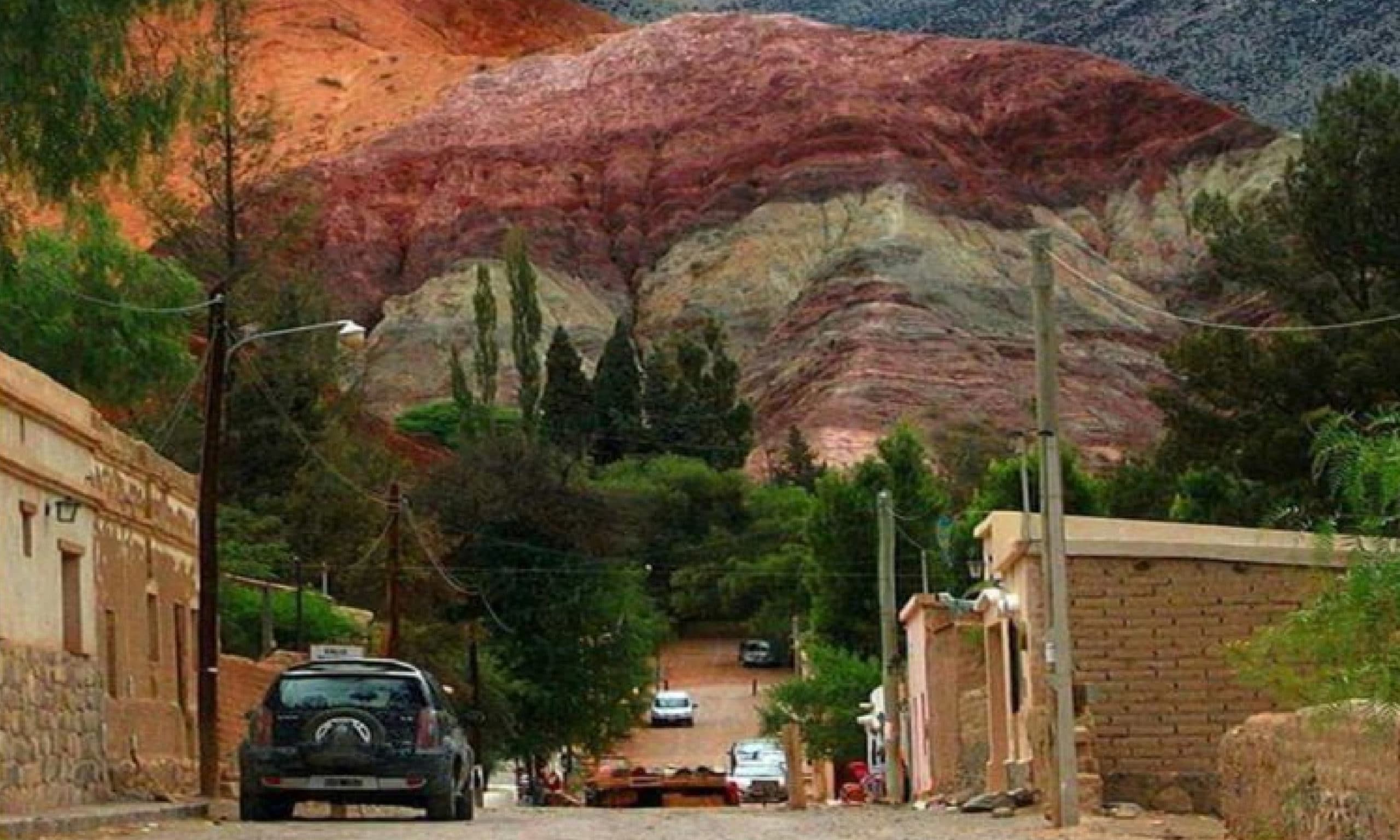
Serranias del Hornocal or 14-color hill
The Serranía de Hornocal is a mountain range located 25 kilometers from the city of Humahuaca in the Jujuy province of Argentina. It is part of the calcareous formation called Yacoraite that extends from the province of Salta, crossing the Quebrada de Humahuaca and then the Bolivian Altiplano to Peru.
It has a height of 4761 meters above sea level. Its characteristic shape is the result of a cutting effect, which consists of the erosion at an angle of a set of parallel layers that produces a visual effect similar to that of folds.
Local people call it the Mountain of 14 colors because they are the tones that can be seen in it. The formation is very curious and seems to be painted by hand, as the colored veins form almost perfect triangles throughout the entire mountain. Each color corresponds to one of the minerals that make up the different rocky materials, turning different shades depending on their oxidation in contact with air and erosion.
These mountains are located at a high altitude, almost 5,000 meters above sea level, so the conditions are quite adverse for practicing sports.
In order to enjoy the spectacle of the Mountain of 14 Colors there is a viewpoint in front of it that you can reach by car along a gravel track. You can go both on your own in your vehicle and on an excursion, so I will tell you in more detail about both options.
From Humahuaca to Tres Cruces
The Pucará de Peñas Blancas is located on a volcanic ledge on the left bank of the Rio Grande, in front of Humahuaca. It has rectangular enclosures and defensive walls. It is also known as the “Pucará de Humahuaca”. The Inca conquest led to its abandonment by the Omaguacas.
Between Humahuaca and Iturbe (also called Negra Muerta and Hipólito Yrigoyen), on the east bank of the Rio Grande is the highest concentration of pre-Columbian agricultural sites in the entire Northwest of Argentina.
The Cerro Negro site is located on the North of Humahuaca, it has petroglyphs on its summit. Removed dark patina exposes a lighter interior.
Churquiaguada, It has 36 stone mounds and circular enclosures, some from the Inca period. They are north of the Old Town of Hornaditas. They were granaries on the Inca trail.
Pucara de Hornaditas, is located on some reddish rocks on the banks of the Chorrillos stream near its confluence with the Churquiaguada stream. It has two sectors, defensive walls and rectangular buildings. Dominate the access from the Quebrada de Inca Cueva and look south to the Pucará de Calete. It is from the Late and Inca period. In the “narrow” there are petroglyphs.
The Humahuaca Canyon: Tres Cruces
The final point of the Quebrada is Tres Cruces, located 3693 mts above sea level. It is the gate to the Puna, and the end point of the Quebrada de Humahuaca on Route 9 and the second town, with the highest municipal organization in Jujuy.
Want to book an excursion to Humahuaca Canyon from Salta?
If you want to book an excursion to Humahuaca Canyon from Salta, just click on the image below
Other amazing activities and excursions in Salta
We have many options to discover Salta, Jujuy, and the Argentinian northwest. These are two of the most interesting, but we have many.




More activities and excursions in Salta? Click here and see a complete list of options
Buy the Salta Travel Pass and get special discounts!
If you’re looking for a package of activities, you can buy any of our Salta Pass and save money. Check some great options by clicking in the image below:
Tours to visit the Argentinian Northwest
We have a great variety of tours to visit these amazing places, most of them including Salta, Jujuy and the Northwest in general, combined with many other amazing destinations in Argentina such El Calafate, Ushuaia, Iguazu Falls, Mendoza, Bariloche… Check one of my favorites, the 104 tour; The Argentinian North in 12 amazing nights
Tours to visit the Argentinian North and other amazing destinations
Check a complete list of tours to enjoy Salta, the Northwest and other destinations in Argentina by clicking here or in the image below
For more information, just contact us at info@ripioturismo.com
Thank you!

